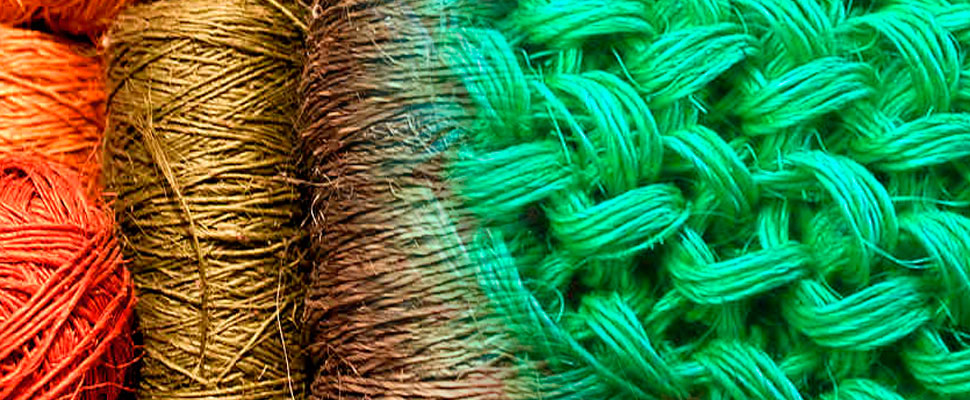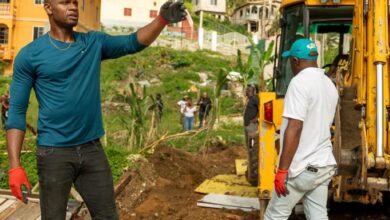¡No more plastic! Fique could be the solution
Listen this article
“Similar to plastic, visible and touchable” is the motto of an enterprise that seeks to replace plastic bags with a biodegradable and compostable bioplastic

Plastic pollution is one of the great environmental problems facing the world today. According to Leo Heileman, regional director of the United Nations Environment Program in Latin America and the Caribbean, five billion plastic bags are used each year and at least one million bottles of this material are purchased every minute.
Leer en español: ¡No más plástico! El fique podría ser la solución
In addition, Heileman states that “almost 70% or more go to the environment or landfills and more than 13 million reach the sea every year.” This is an alarming situation because if we do not do something soon it is estimated that “by 2025 we will have about 12,000 million tons of plastic waste in the garbage dumps and in nature”. Faced with this, projects are being carried out in all parts of the world to change this panorama.
In Bogotá, Colombia, for example, an enterprise is being developed with the support of SENA Tecnoparque and the Externado University, which initially seeks to replace plastic bags with a bioplastic created from various fibers, including fique’s fiber.
Also known in other parts of the world as maguey or agave, this is a plant that is planted in several regions of Colombia, which is traditionally used to make handicrafts, such as hats, backpacks, and sandals.
Perhaps it may interest you: Beetle larvae are the future!
What is the project?
Yeffer Guzmán is one of the founders and developers of this venture that bears the name of BioTalega, which is currently in the process of being patented in the Superintendence of Industry and Commerce (SIC).
Under the motto Similar to the plastic, to the sight and touchable, this project is a biopolymer whose main fiber is the fique; although they also have a wide variety of other fibers that they are evaluating. According to Guzmán, to make handicrafts stalk is used, the structure of leaves of the fique, from which the fiber is extracted. However, only 4% of this is used and the rest is discarded, “many times polluting rivers”.
With his venture, he says, he would be using “almost 95% of the entire structure of the stalk”. For Guzmán, it is extremely important to take full advantage of the plant’s growth and not only to make handicrafts, but also to obtain a “bioplastic that allows replacing that condition of the multiple packages that are currently contaminating us with what is the Petroleum derivatives”.
The final product sought is a transparent composition, similar to plastic when you touch it. At the moment still, it is being investigated and different tests are being carried out to reach that expected result of a bioplastic that is characterized for being biodegradable and compostable. This in order to “get any shape that can be represented in a plastic”.
Guzmán also mentions that in addition to this new composition, they obtained a mixture that would replace polystyrene, which is thought to be much more polluting than plastic.
 ” ]¡No more plastic![/slider_item][slider_item title=”¡No más plástico!” src=”
” ]¡No more plastic![/slider_item][slider_item title=”¡No más plástico!” src=” ” ]¡No more plastic![/slider_item][slider_item title=”¡No más plástico!” src=”
” ]¡No more plastic![/slider_item][slider_item title=”¡No más plástico!” src=” ” ]¡No more plastic![/slider_item][slider_item title=”¡No más plástico!” src=”
” ]¡No more plastic![/slider_item][slider_item title=”¡No más plástico!” src=” ” ]¡No more plastic![/slider_item][slider_item title=”¡No más plástico!” src=”
” ]¡No more plastic![/slider_item][slider_item title=”¡No más plástico!” src=” ” ]¡No more plastic![/slider_item][slider_item title=”¡No más plástico!” src=”
” ]¡No more plastic![/slider_item][slider_item title=”¡No más plástico!” src=” ” ]¡No more plastic![/slider_item][/slideshow]
” ]¡No more plastic![/slider_item][/slideshow]How sustainable is the fique?
Committed to the environment, there are several benefits of the fique that make this a sustainable venture, according to Guzmán. One of them is that it is compatible with any area of the country since as mentioned, it occurs in several parts of Colombia, such as Risaralda, Santander and Antioquia. In fact, he explains, in the country there are around 40 thousand hectares planted with this plant.
On the other hand, it does not need much water and does not imply a sustainability issue for the food part. In addition, it is strong to diseases and its care is very basic. However, there is a very important cultural theme that motivated this project and is the fact that the fique has been used historically in Colombia.
According to him, this venture “arose from a series of concerns regarding environmental issues and some issues of traditional companies that are being lost in the country. “ So with this initiative not only seeks to generate a positive impact at the environmental level but also socially.
This is because through this endeavor the work of “small farmers who do not want to lose this family tradition” would be encouraged, taking IGNORE INTO account that historically this is a widely used plant, although in recent years its planting has been reduced. In this way, this project would promote agriculture in the country, which according to him gives this dimension of sustainability to the project.
LatinAmerican Post | Diana Laura Rojas Leal
Translated from: ‘¡No más plástico! El fique podría ser la solución’





